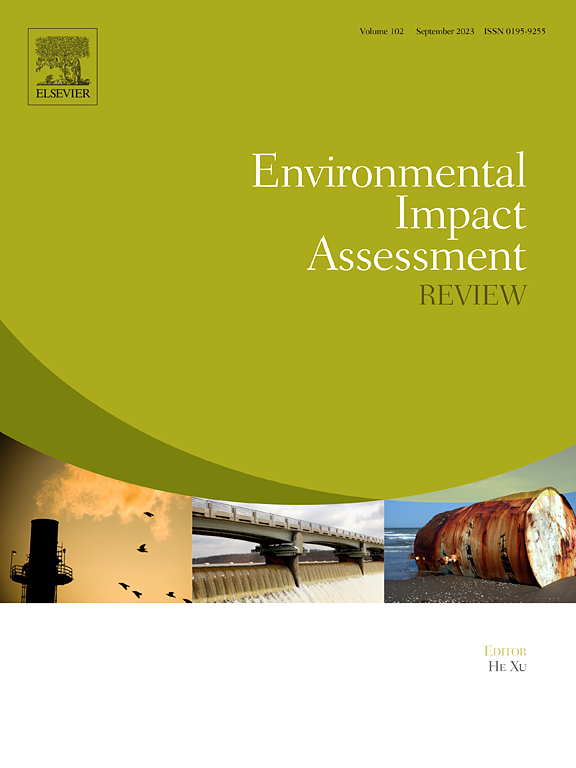Quantifying the trade-offs: Energy potential and environmental impacts of municipal landfill mining in China
IF 11.2
1区 社会学
Q1 ENVIRONMENTAL STUDIES
引用次数: 0
Abstract
Landfilling is a common method for municipal solid waste (MSW) management, and a significant amount of aged landfill waste (ALW) has accumulated over the last few decades. It is important to promote landfill mining to release land resources and utilize ALW. In many countries, screened combustible ALW is sent to MSW incineration plants for electricity generation. Yet it is controversial whether this method causes environmental pollution. Based on actual project data and long time-series city-level data in China, this study uses material flow analysis (MFA), life-cycle assessment (LCA), and geographic information systems (GIS) to systematically assess this workflow's energy and environmental aspects. The results show that ALW in Chinese cities exceeded 2000 million tons in 2022 and has the potential to generate about 400 million MWh of electricity, equivalent to 4.5 % of China's electricity production amount, close to the total nuclear power generation in 2022. However, trade-offs were observed among environmental impact indicators. Particulate matter formation, photochemical ozone formation, and terrestrial acidification potentials were reduced, while extra impacts on global warming potential, freshwater eutrophication, and human toxicity potentials were caused. Meanwhile, boosting energy conversion rate to 40 % could raise energy potential by 74 % and cuts carbon emissions by 14 %. The following is suggested: (1) improve energy conversion efficiency of combustible materials in ALW; (2) promote ALW utilization according to cities' MSW management ability, and explore new methods for future promotion.
量化权衡:中国城市垃圾填埋场采矿的能源潜力和环境影响
堆填是一种常用的城市固体废物管理方法,在过去的几十年里,大量的垃圾填埋场(ALW)积累了。推进垃圾填埋开采对释放土地资源和利用垃圾具有重要意义。在许多国家,经过筛选的可燃ALW被送往城市生活垃圾焚烧厂发电。然而,这种方法是否会造成环境污染仍存在争议。本研究基于实际项目数据和中国城市级的长时间序列数据,采用物料流分析(MFA)、生命周期评估(LCA)和地理信息系统(GIS)对该工作流的能源和环境方面进行了系统评估。结果表明,2022年中国城市ALW总量突破20亿吨,有望发电约4亿兆瓦时,相当于中国发电量的4.5%,接近2022年核电发电总量。然而,环境影响指标之间存在权衡。颗粒物形成、光化学臭氧形成和陆地酸化潜势降低,同时对全球变暖潜势、淡水富营养化和人体毒性潜势造成额外影响。与此同时,将能源转化率提高到40%可以将能源潜力提高74%,并减少14%的碳排放。建议:(1)提高ALW中可燃材料的能量转换效率;(2)根据城市生活垃圾管理能力推进垃圾利用,探索未来推广的新方法。
本文章由计算机程序翻译,如有差异,请以英文原文为准。
求助全文
约1分钟内获得全文
求助全文
来源期刊

Environmental Impact Assessment Review
ENVIRONMENTAL STUDIES-
CiteScore
12.60
自引率
10.10%
发文量
200
审稿时长
33 days
期刊介绍:
Environmental Impact Assessment Review is an interdisciplinary journal that serves a global audience of practitioners, policymakers, and academics involved in assessing the environmental impact of policies, projects, processes, and products. The journal focuses on innovative theory and practice in environmental impact assessment (EIA). Papers are expected to present innovative ideas, be topical, and coherent. The journal emphasizes concepts, methods, techniques, approaches, and systems related to EIA theory and practice.
 求助内容:
求助内容: 应助结果提醒方式:
应助结果提醒方式:


